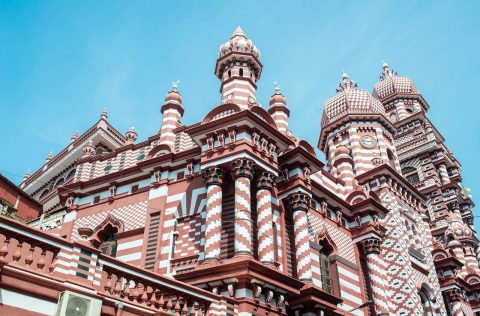Discover the Heart of South Sri Lanka, One Delicious Meal at a Time

In the south of Sri Lanka, spices fill the air as hands work lovingly to craft dishes laced with belly-filling joy.
I’m pushing a heavy stone rolling pin back and forth over a flat stone, slowly crushing a tablespoon of rice into a paste. We’re in an open-sided mudbrick kitchen in a dappled green garden near Galle, a coastal city about two hours south of the Sri Lankan capital, Colombo. Densely planted and tropical, the setting is overwhelmingly lush – coconut palms spear towards a silver sky, banana plants throng by a low-slung house. In the thatch-roofed shack – the home of Ceylon Mom’s Kitchen cooking school – there’s also the burnished orange of turmeric, the shimmering silver of fresh fish awaiting the pot, the striking white of the coconut we’ve grated and the red crackle of fire in a benchtop burner fuelled by gathered palm rushes.
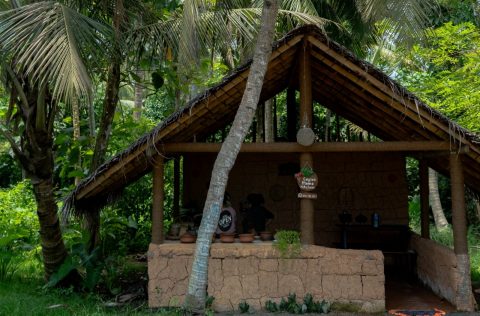
My Ceylonese mum for the afternoon is the smiling Anusha, who cooks everything by eye and hand. She checks my rice grinding. Progress is slow: the air is humming with humidity as my shirt clings to my back. Anusha takes the implement and begins to rapidly rock it from side to side as she pushes it along the stone, adding flicks of water as she goes. My gritty rice rubble soon becomes a smooth white paste, which Anusha scrapes into a pumpkin curry, thickening it naturally as it warms over the fire.
As I’m learning, there’s quite a bit of muscle in traditional Sri Lankan cooking. “Use full power,” Anusha tells me, as I tentatively squish my fist around grated coconut and water to make coconut cream. “Harder,” she encourages. Hands are everything in Sri Lanka when it comes to food. We stir lentils, onions and spices with our splayed fingers before cooking the ingredients into a fragrant dal. Along the coast road outside, families sit at street stalls sharing a meal: everyone from toddler to grandpa uses fingers to gather rice and meat and vegetables into neat parcels to pop into their mouths.
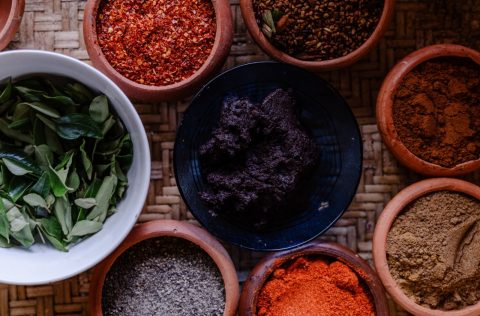
On Galle’s main beach, we see dozens of men hauling in a huge fishing net by hand, a slow tug-of-war with the sea. There’s a fish market just here on the sand, the day’s catch lined up on tables under blue tarps, melting ice dripping onto sandalled feet. Within sight to the north, the thick ramparts of Galle Fort overlook the water. This fortified town was founded in the 16th century by Portuguese colonisers and given its current shape in the 18th century by the region’s Dutch rulers. During the devastating tsunami on Boxing Day in 2004, thick walls managed to keep the UNESCO World Heritage site safe. The cricket stadium behind the landmark was not so lucky: it was flattened by the onslaught of the powerful waves. More than 20 years later, we talk to fishmongers and fruit vendors in the vicinity, admiring their anchovies and bananas; the fresh curd stacked in ceramic ramekins; the displays of striped melons; the hanging garlands of plump purple grapes. “Where are you from?” they want to know. When we answer, “Australia”, they break into huge smiles and say one name: “Shane Warne!” The late Australian spin bowler visited the region six weeks after the tsunami and marshalled relief efforts to rebuild the cricket ground. The people have not forgotten.
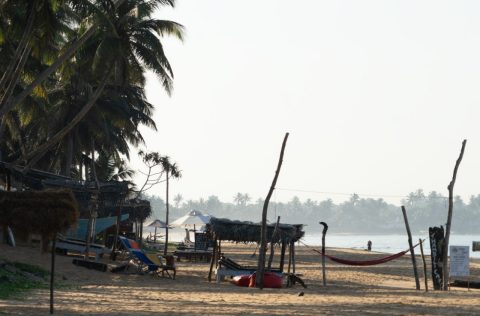
There are trains from Colombo to Galle but a food-focused regional explorer needs a driver. This can be arranged through multiple websites, including Sri Lanka Car & Driver Hire, and will cost about $100 per day. We couldn’t have crammed as much into our itinerary – or our stomachs – without Sami as a guide. After cooking with Anusha, we motor to nearby Koggala Lake to see cinnamon growing firsthand. Sri Lanka is the world’s largest exporter of cinnamon and the fragrant spice is used liberally and lovingly in local dishes. Boats ring the shallow lake, lined up at the ready to take visitors keen to spot crocodiles or macaques and to learn how cinnamon is produced. We eventually dock at a small island and climb a muddy path to a rampant garden: jackfruit trees, pineapple plants and cinnamon saplings dot the red earth. We sit outside a blue-walled home sipping on throat-gripping cinnamon tea while a young woman uses a sharp knife to prise bark away from a branch. The shavings curl into the familiar scrolled shape of a cinnamon stick, which she then lays over taut suspended strings to dry. It’s humbling to see the slow manual labour that goes into a spice I sprinkle over my porridge at home.
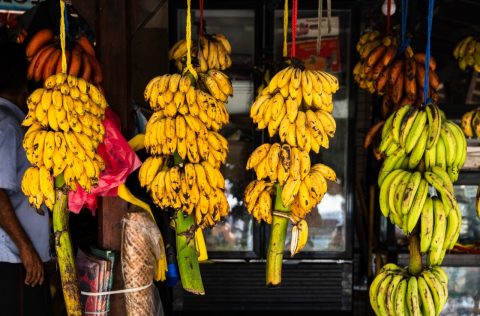
That night, we stay at 906 Hikkaduwa, a private two-bedroom villa on the beach with its own plunge pool, 20 kilometres north of Galle. There are fancier options in the area but the hospitality here feels connected to the village culture. We ask our onsite chef for a traditional Sri Lankan dinner and he calls us a few hours later to a generous banquet, served on the porch at sunset. A monkey swings from a palm in the yard and clatters across the roof to the neighbouring property. We eat rice scattered with fried curry leaves, beans with dried chilli, sticky eggplant tangled with onion, fish in turmeric-dyed coconut gravy. Another feast for the hands, to ferry by fingers to mouth, as a cloud-ringed sun drops through an orange sky into the lapping Indian Ocean beyond the front gate.
